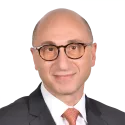October 31, 2019
Antitrust laws in the United States "prohibit business practices that unreasonably deprive consumers of the benefits of competition."1 Economists have generally been the foremost analysts of antitrust issues, constructing economic models and comparing the facts and economic data in a case to predictions given by economic theories.2,3 Data and assumptions related to the design, manufacturing, integration, deployment, and use of products can be critical to economists' conclusions in antitrust cases. Despite broad agreement among economists on antitrust theory and methods, seemingly minor discrepancies in initial assumptions or data can cause economists to reach substantially different conclusions.4
As antitrust laws are increasingly applied to technologically complex products and services in the electronics and software industries, technology experts are playing a growing role in antitrust analyses.5 Technology experts can use techniques like reverse engineering to reveal key facts about the way a product was developed or how a product functions. Technology experts can also provide valuable support for economic analyses by supplying a sound basis for the technological assumptions and data that go into economic models.
The two case studies presented here highlight the important role technology experts can play in antitrust cases by (1) revealing salient facts about the underlying architecture of a complex product and (2) providing insight on manufacturing processes and materials chemistry to support economic analysis.
Case Study #1: Microsoft Antitrust Case
In 1998, the U.S. Department of Justice (DOJ) and 20 states brought a claim against the Microsoft Corporation for alleged violations of the Sherman Act.6,7 A key issue in this technology-heavy case was whether the bundling of Microsoft's Internet Explorer browser with the Microsoft Windows operating system constituted illegal tying of multiple products.
Microsoft asserted that the Internet Explorer browser was not a separate product from the operating system but rather an integrated feature that could not be removed. Microsoft's position was that software products consist solely of software code and that therefore the DOJ would have to identify the particular lines of code that constituted Internet Explorer to identify the "software product" at issue. Microsoft also emphasized that Internet Explorer was not tied to Windows 98 but rather the two had an "interpenetrating design" that made them not separate products.
To show that Microsoft's Internet Explorer "browser product" could be removed from Windows, the DOJ relied on the expert analysis and testimony from a noted computer scientist. The DOJ's technology expert developed a computer program to remove the Internet Explorer browser from Windows without any degradation of the software performance and demonstrated this program during the trial. The DOJ's technology expert also accused Microsoft of altering Windows through an update that occurred midway through the case to make it incompatible with the tools he had developed.7
A district court accepted the analysis presented by the DOJ's technology expert and found that Microsoft tied the Internet Explorer browser to Windows to gain market share.9 The court ordered that Microsoft be broken up into separate companies, one for its Windows operating system and another for its other software and Internet businesses.10 Later, parts of the initial ruling were overturned by a federal appeals court,11 and the tying claim was subsequently dropped by the DOJ after the Court of Appeals ruled in part that the DOJ had failed to establish "a precise definition of browsers" at trial. Despite the general acceptance of the DOJ's technical analysis presented at trial, observers suggested that a conceptual "disconnect" between the trial attorneys and technology expert on the nature of software, code, and browsers played a role in the ultimate outcome.12 This case study not only highlights the significance of technology expert analysis in antirust matters, for without it courts would be completely blind, but also illustrates the importance of clear and effective communications in explaining increasingly complex technologies.
Case Study #2: Thin-Film Transistor Liquid Crystal Display Antitrust Cases
Beginning in 2001 and continuing for over a decade, several manufacturers of thin-film transistor liquid crystal display (TFT-LCD) panels were accused in criminal and civil cases of violating antitrust statutes with respect to the pricing of TFT-LCD panels and certain products such as televisions, computer monitors, and mobile devices that contained them.13
One critical technological issue was whether all TFT-LCD panels are essentially the same, or "substitutable," and therefore suitable for a price-fixing conspiracy.14 As a technology expert for the defendants, we issued a lengthy report examining the technological differences between TFT-LCD panels and how different applications, such as notebooks, monitors, and televisions, tend to drive differences in the electronics, liquid crystal cells, backlight units and manufacturing processes of various TFT-LCD panels. These differences between TFT-LCD modules, based on, for example, unique liquid crystal formulations, cell structures, aperture ratios, quantity and type of optical films, and response times, would not render modules/panels swappable across different applications.
Another critical issue was the amount of the alleged overcharge collected by the TFT-LCD manufacturers.15 Calculation by the economists of the alleged overcharge was based in part on the producer price index (PPI), an economic statistic that measures the average change over time in the selling prices received by domestic producers of goods and services. As there is no PPI for TFT-LCD panels specifically, one set of economists used the PPI for microprocessors, while another used other applicable electronics-based PPIs to obtain a far different result.
We explained why it was not scientifically accurate to use the PPI for microprocessors as a proxy for TFT-LCD production costs, and pointed out that microprocessors and TFT-LCD products are substantially dissimilar in manufacturing, materials, and use. For example, TFT-LCD panels use different materials (e.g., glass substrates versus silicon substrates) and have much larger transistor sizes compared to microprocessors. Moreover, microprocessors generally benefit from the technological advances collectively known as "Moore's Law," whereas TFT-LCD panels do not generally follow the same technological progression.
Testimony of technology experts and economists proved influential to the outcomes of multiple TFT-LCD antitrust trials. In one case, plaintiffs asked for $770 million in damages based on their economic experts' analysis and overcharge estimate, but the jury awarded plaintiffs only $7.4 million in direct damages, based on figures calculated and presented by the defendant's expert.16
How Exponent Can Help
Exponent's multidisciplinary team of electrical engineers and computer scientists conducts investigations for antitrust, due diligence, intellectual property, class action, regulatory, and product liability matters. We can provide a sound basis for the technological assumptions and data that go into the economic models used in antitrust cases.
Sources
1 U.S. DEPARTMENT OF JUSTICE, ANTITRUST ENFORCEMENT AND THE CONSUMER, available at https://www.justice.gov/atr/file/800691/download.
2 Karin A. DeMasi & Jonathan J. Clarke, Litigation, "The Expert Economist: An antitrust litigator's guide to working with these crucial witnesses," N.Y.L.J. (Jan. 18, 2011).
3 William Kolasky, "Antitrust Litigation: What's Changed in Twenty-Five Years?" 27 ANTITRUST, no. 1, Fall 2012, at 12.
4 Pierre-Yves Cremieux & Aaron C. Yeater, "Use and Abuse: The Myth of Divided Antitrust Economics," GLOBAL ANTITRUST ECONOMICS: CURRENT ISSUES IN ANTITRUST ECONOMICS AND LAW, Concurrences Review, 2016, pp. 15 — 21.
5 Bruce L. Simon & Thomas K. Boardman. "Reverse Engineering Your Antitrust Case: Plan for Trial Even Before You File Your Case," 28 Antitrust no. 2, Spring 2014; 41.
6 United States of America et al v. Microsoft Corporation, Case No. 1:98-cv-01232-CKK and Case No. 1:99-cv-01233-CKK.
7 The following is based on Andrew Chin, Decoding Microsoft: A First Principles Approach, 20 WAKE FOREST L. REV. 1, 33 (2005).
8 See also: Joel Brinkley, Microsoft Accused of Sabotaging Witness's Computer Program, N.Y. TIMES, Dec. 15, 1998.
9 See also: Joel Brinkley, U.S. Judge Says Microsoft Violated Antitrust Laws with Predatory Behavior, N.Y. TIMES, Apr. 4, 2000.
10 See also: Joel Brinkley, Microsoft Breakup is Ordered for Antitrust Law Violations, N.Y. TIMES, Jun. 8, 2000.
11 See also: Michael Brick, U.S. Appeals Court Overturns Microsoft Antitrust Ruling, N.Y. TIMES, Jun. 28, 2001.
12 Andrew Chin, Decoding Microsoft: A First Principles Approach, 20 WAKE FOREST L. REV. 1, 33 (2005), p. 4.
13 In re: TFT — LCD (Flat Panel) Antitrust Litigation, No. 07-MDL-1827, individual Case Nos. 10-cv-4572 and 12-cv-4114.
14 Bruce L. Simon & Thomas K. Boardman. "Reverse Engineering Your Antitrust Case: Plan for Trial Even Before You File Your Case," 28 Antitrust no. 2, Spring 2014; 41.
15 Pierre-Yves Cremieux & Aaron C. Yeater, "Use and Abuse: The Myth of Divided Antitrust Economics," GLOBAL ANTITRUST ECONOMICS: CURRENT ISSUES IN ANTITRUST ECONOMICS AND LAW, Concurrences Review, 2016, pp. 15 — 21.
16 Pierre-Yves Cremieux & Aaron C. Yeater, "Use and Abuse: The Myth of Divided Antitrust Economics," GLOBAL ANTITRUST ECONOMICS: CURRENT ISSUES IN ANTITRUST ECONOMICS AND LAW, Concurrences Review, 2016, pp. 15 — 21.
![Reliability [EECS]](/sites/default/files/styles/hero_teal/public/media/images/GettyImages-1127076087.jpg.webp?itok=S2OyC0Gn)


